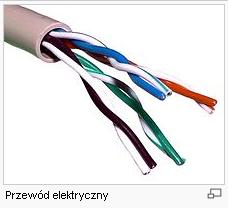Hello.
The topic is actually quite known, but there is no precise definition of the problem anywhere.
I will put a UTP network cable in the basement. There is a place where it would be most profitable for me to put a cable in a PVC strip with a 220V single-phase cable (max power consumption is about 2kW). This section is about 4 meters long, the rest is no longer close to the power industry ...
Now I have questions for you:
- if I put an unshielded UTP cable next to the power cable (4m section), there will be no interference causing loss of transmission?
- if there is interference, can I put a shielded UTP cable in order to eliminate it?
-if the answer to both of the above questions was: YES, does it make sense to have a shielded cable, if neither the computer nor the switch are grounded (the electrical installation is without grounding, and the computer is also ungrounded)?
I would prefer not to check the phase effect on the network in practice, because I would not like to forge in the walls later, just in case ...
Regards
The topic is actually quite known, but there is no precise definition of the problem anywhere.
I will put a UTP network cable in the basement. There is a place where it would be most profitable for me to put a cable in a PVC strip with a 220V single-phase cable (max power consumption is about 2kW). This section is about 4 meters long, the rest is no longer close to the power industry ...
Now I have questions for you:
- if I put an unshielded UTP cable next to the power cable (4m section), there will be no interference causing loss of transmission?
- if there is interference, can I put a shielded UTP cable in order to eliminate it?
-if the answer to both of the above questions was: YES, does it make sense to have a shielded cable, if neither the computer nor the switch are grounded (the electrical installation is without grounding, and the computer is also ungrounded)?
I would prefer not to check the phase effect on the network in practice, because I would not like to forge in the walls later, just in case ...
Regards



